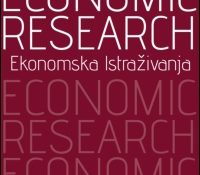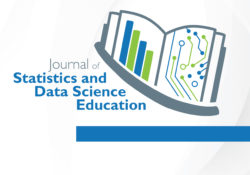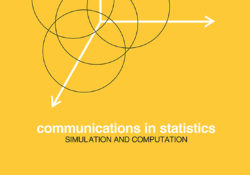tandfonline.com har udgivet en rapport under søgningen “Teacher Education Mathematics”: Abstract Formulae display:?Mathematical formulae have been encoded as MathML and are displayed in this HTML version using MathJax in order to improve their display. Uncheck the box to turn MathJax off. This feature requires Javascript. Click on a formula to zoom. Abstract The article examines shifts in the wage premium between respective task-content groups of the labour force in Poland. The parameters of a microeconometric, multilevel model are estimated, and wage premiums for task-content occupation groups are calculated. Individual data from the 2004 to 2016 editions of Structure of Earnings by Occupation (S.E.O.) survey are used. A positive wage premium is reported in the group of non-routine jobs and a negative wage premium in the case of routine jobs, which… Continue Reading →
Like this:
Like Loading...
tandfonline.com har udgivet en rapport under søgningen “Teacher Education Mathematics”: Abstract Formulae display:?Mathematical formulae have been encoded as MathML and are displayed in this HTML version using MathJax in order to improve their display. Uncheck the box to turn MathJax off. This feature requires Javascript. Click on a formula to zoom. Abstract The main goal of this study is to show that the association between university entrance score and first-year students’ academic performance varies randomly across courses after controlling for students’ sociodemographic, schooling trajectory and motivational variables. The sample consists of 2697 first-year students who were enrolled in 54 courses at a Portuguese public university in 2015/16. Multilevel modelling of academic performance suggests that 34% of variability in grade point average is due to differences among courses and that 80%… Continue Reading →
Like this:
Like Loading...
tandfonline.com har udgivet en rapport under søgningen “Teacher Education Mathematics”: ABSTRACT Formulae display:?Mathematical formulae have been encoded as MathML and are displayed in this HTML version using MathJax in order to improve their display. Uncheck the box to turn MathJax off. This feature requires Javascript. Click on a formula to zoom. ABSTRACT Statistical literacy refers to understanding fundamental statistical concepts. Assessment of statistical literacy can take the forms of tasks that require students to identify, translate, compute, read, and interpret data. In addition, statistical instruction can take many forms encompassing course delivery format such as face-to-face, hybrid, online, video capture, and flipped. In this study, we examined statistical literacy of graduate students using a validated assessment tool (the Comprehensive Assessment of Outcomes in Statistics; CAOS) across two increasingly popular delivery… Continue Reading →
Like this:
Like Loading...
tandfonline.com har udgivet en rapport under søgningen “Teacher Education Mathematics”: ABSTRACT ABSTRACT Two classes of methods properly account for clustering of data: design-based methods and model-based methods. Estimates from both methods have been shown to be approximately equal with large samples. However, both classes are known to produce biased standard error estimates with small samples. This paper compares the bias of standard errors and statistical power of marginal effects for generalized estimating equations (a design-based method) and generalized/linear mixed effects models (model-based methods) with small sample sizes via a simulation study. Provided that the distributional assumptions are met, model-based methods produced the least-biased standard error estimates and greater relative statistical power. Link til kilde
Like this:
Like Loading...



